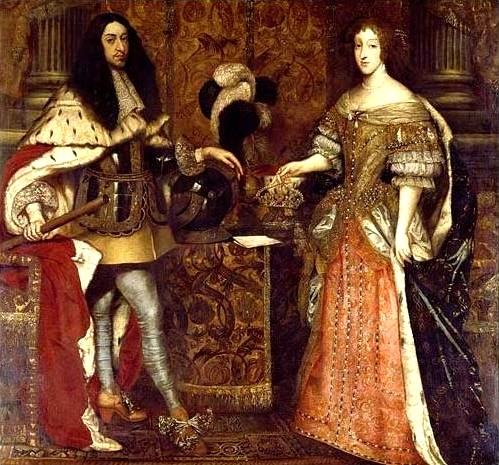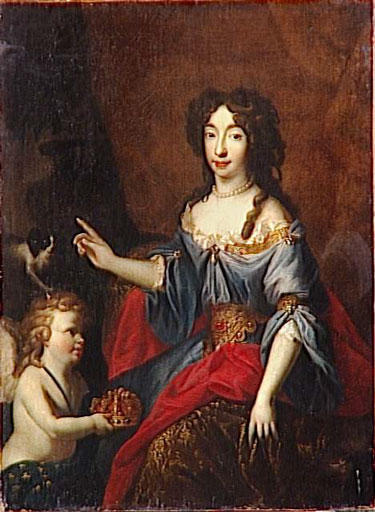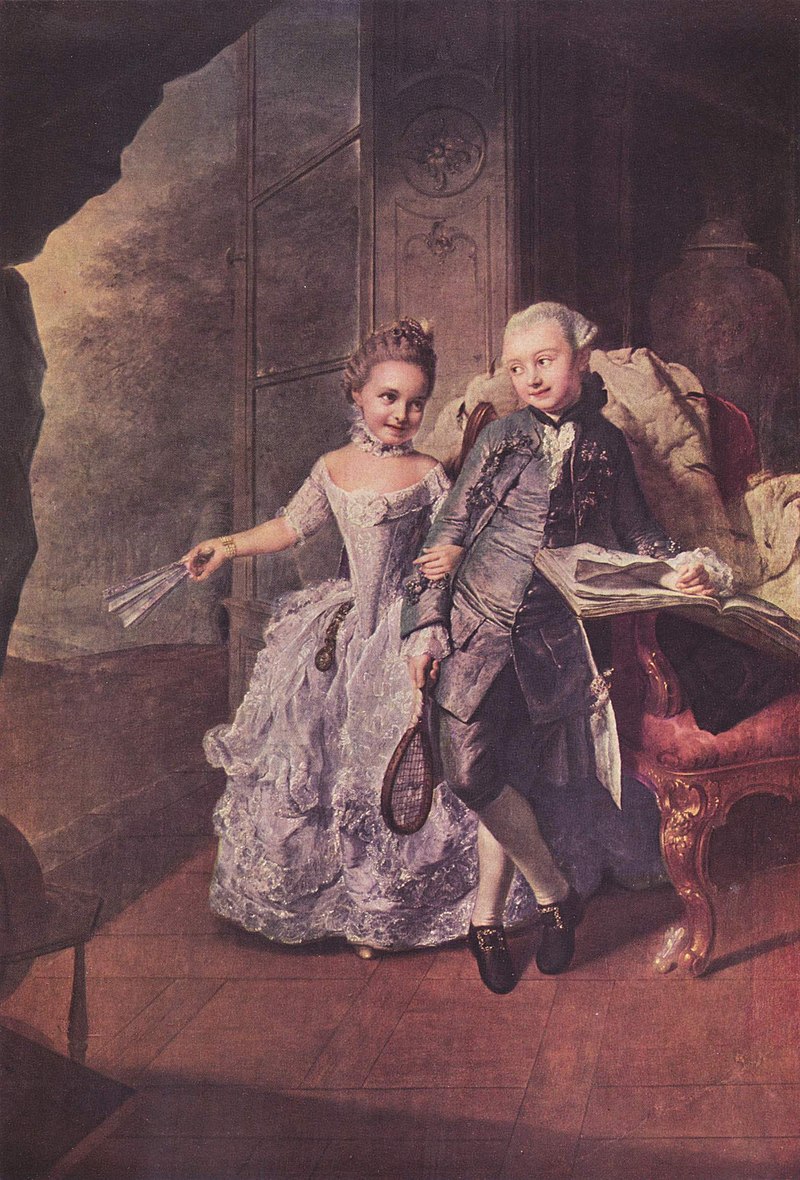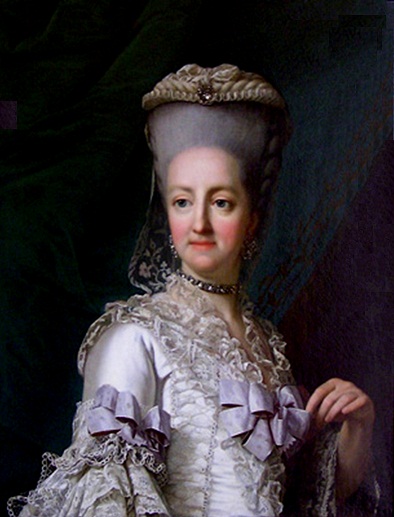by Susan Flantzer
© Unofficial Royalty 2023
Principality of Lippe: Originally called Lippe-Detmold, the Principality of Lippe came into existence in 1789 when it was raised from a County within the Holy Roman Empire to a Principality. Leopold I, Count of Lippe-Detmold became the first Prince of Lippe.
At the end of World War I, Leopold IV, the last Prince of Lippe, was forced to abdicate on November 12, 1918. However, Leopold negotiated a treaty with the new government that allowed his family to remain in Lippe. Today the territory that encompassed the Principality of Lippe is located in the German state of North Rhine-Westphalia.
*********************

Elisabeth of Schwarzburg-Rudolstadt, Princess of Lippe; Credit – Wikipedia
Elisabeth of Schwarzburg-Rudolstadt was the wife of Leopold III, Prince of Lippe. Born on October 1, 1833, in Rudolstadt, then in the Principality of Schwarzburg-Rudolstadt, now in the German state of Thuringia, Elisabeth was the second but the eldest surviving of the four children and the only daughter of Albrecht, the reigning Prince of Schwarzburg-Rudolstadt and Princess Auguste of Solms-Braunfels. Her paternal grandparents were Ludwig Friedrich II, Prince of Schwarzburg-Rudolstadt and Karoline of Hesse-Homburg. Elisabeth’s maternal grandparents were Prince Friedrich Wilhelm of Solms-Braunfels and Friederike of Mecklenburg-Strelitz.
Elisabeth had three brothers but only one survived childhood:
- Karl (born and died 1828)
- Georg Albrecht, Prince of Schwarzburg-Rudolstadt (1838 – 1890), unmarried
- Ernst Heinrich (born and died 1848)
Elisabeth was raised in a strict but simple manner by her Swiss governess and received drawing and painting lessons from Richard Schinzel, who later became the last Rudolstadt court painter. On April 17, 1852, in Rudolstadt, 18-year-old Elisabeth married 30-year-old Leopold III, Prince of Lippe but their marriage was childless. However, Leopold, who loved children very much, invited many children to Detmold Castle (link in German) every year for Christmas.

Elisabeth’s husband Leopold III, Prince of Lippe; Credit – Wikipedia
Elisabeth used all the means at her disposal for charitable causes. She published a booklet with Bible verses for every day of the year and designed wall decorations with Bible verses. The booklet and wall decorations were mass-produced and the proceeds went to Elisabeth’s charitable causes. Devoted to children, Elisabeth founded a school, the Elisabeth-Anstalt in the town of Blomberg. She also promoted the establishment and maintenance of the Augustineum Secondary School a school and teacher training center in Otjimbingwe, then in a settlement of the Herero people, now in the country of Namibia.
Throughout her life, Elisabeth remained connected to her homeland and regularly visited Rudolstadt. Although she was popular with the people of the Principality of Lippe, Elisabeth and her husband Leopold became increasingly estranged which greatly distressed her. On December 8, 1875, Elisabeth’s husband Leopold III, Prince of Lippe, aged 54, died in Detmold after suffering a stroke and was succeeded by his brother Woldemar. Leopold was buried at the Mausoleum on the Büchenberg (link in German) in Detmold, Principality of Lippe, now in the German state of North Rhine-Westphalia.
After Leopold’s death, Elisabeth moved into her widow’s residence at the New Palais in Detmold and continued her charitable work. She convinced her sister-in-law Princess Luise of Lippe to leave her palace to the Principality of Lippe upon her death so that it could house the Princely Public Library, today the Lippe State Library in Detmold (link in German). Among the other projects that Elisabeth sponsored was the Hostel zur Heimat Detmold (link in German), a facility for people in social distress, which is still in existence. As a condition of her support, Elisabeth stipulated that her name not be associated with the hostel.

Stadtkirche St. Andreas in Rudolstadt, where Elisabeth is interred; Credit – Von Telemarco, CC BY-SA 3.0, https://commons.wikimedia.org/w/index.php?curid=46588535
After the death of her brother Georg Albrecht, Prince of Schwarzburg-Rudolstadt in 1890, Elisabeth inherited the manor in Niederkrossen (link in German), then in the Principality of Schwarzburg-Rudolstadt, now in the German state of Thuringia. Elisabeth regularly stayed there and had a handicraft school built there in the town. While staying in Niederkrossen during the autumn of 1896, Elisabeth became ill with pneumonia, and died on November 27, 1896, at the age of sixty-three. As per her wishes, Elisabeth was not buried at the traditional burial site of the princely family of Lippe but rather in the princely crypt at the Stadtkirche St. Andreas (link in German), an Evangelical Lutheran church in Rudolstadt, then in the Principality of Schwarzburg-Rudolstadt, now in the German state of Thuringia, where members of her birth family were buried.
This article is the intellectual property of Unofficial Royalty and is NOT TO BE COPIED, EDITED, OR POSTED IN ANY FORM ON ANOTHER WEBSITE under any circumstances. It is permissible to use a link that directs to Unofficial Royalty.
Works Cited
- Єлизавета Шварцбург-Рудольштадтська (2023) Wikipedia (Ukrainian). Available at: https://uk.wikipedia.org/wiki/%D0%84%D0%BB%D0%B8%D0%B7%D0%B0%D0%B2%D0%B5%D1%82%D0%B0_%D0%A8%D0%B2%D0%B0%D1%80%D1%86%D0%B1%D1%83%D1%80%D0%B3-%D0%A0%D1%83%D0%B4%D0%BE%D0%BB%D1%8C%D1%88%D1%82%D0%B0%D0%B4%D1%82%D1%81%D1%8C%D0%BA%D0%B0 (Accessed: 12 July 2023).
- Elisabeth von Schwarzburg-Rudolstadt (2023) Wikipedia (German). Available at: https://de.wikipedia.org/wiki/Elisabeth_von_Schwarzburg-Rudolstadt (Accessed: 12 July 2023).
- Flantzer, Susan. (2020) Albrecht, Prince of Schwarzburg-Rudolstadt, Unofficial Royalty. Available at: https://www.unofficialroyalty.com/albrecht-prince-of-schwarzburg-rudolstadt/ (Accessed: 12 July 2023).
- Flantzer, Susan. (2023) Leopold III, Prince of Lippe, Unofficial Royalty. Available at: https://www.unofficialroyalty.com/leopold-iii-prince-of-lippe/ (Accessed: 12 July 2023).

















































